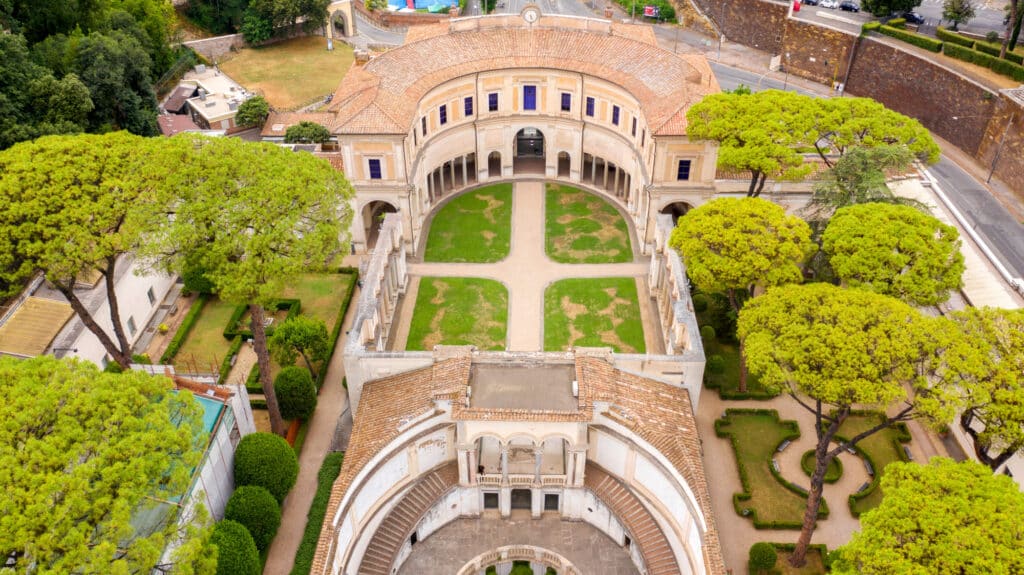
The entrance fees to the National Etruscan Museum of Villa Giulia are €17 per individual who is 18 years of age and above. A rebate of €7 is given to European citizens between the ages of 18 and 25, thus allowing them to pay just €10 for admission. Youngsters who are under 17 years old can avail of complimentary access to the museum.
Nestled in the heart of Rome, the National Etruscan Museum of Villa Giulia houses an unparalleled collection of artifacts and relics, showcasing the rich history and culture of the Etruscan civilization. This article will guide you through the museum’s remarkable exhibits, taking you on a journey back in time to discover the enchanting world of the Etruscans.
The National Etruscan Museum of Villa Giulia was established in 1889, with the purpose of preserving and showcasing the fascinating heritage of the Etruscan civilization. The museum is located within the picturesque Villa Giulia, a 16th-century building commissioned by Pope Julius III. The villa’s beautiful architecture and lush gardens create the perfect setting for exploring the world of the Etruscans.
The Etruscan Civilization: An Overview
The Etruscans were a pre-Roman civilization that flourished in the region now known as Tuscany, between the 8th and 3rd centuries BCE. They were renowned for their art, architecture, and technological advancements, which greatly influenced the development of the Roman Empire. The Etruscans left behind a rich legacy that can be appreciated through the numerous artifacts and art pieces housed in the National Etruscan Museum of Villa Giulia.
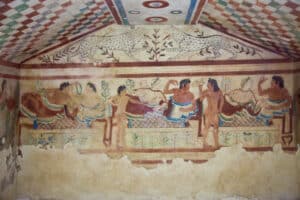
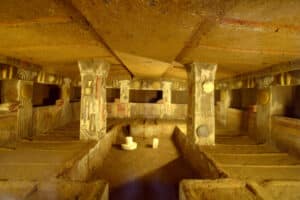
The Collections at the National Etruscan Museum of Villa Giulia
The museum’s vast collection is spread across several rooms, each dedicated to specific aspects of Etruscan culture and history. Some of the most notable sections include:
The Tomb Artifacts: The Etruscans were known for their elaborate burial practices, which included the construction of intricate tombs filled with precious items. The National Etruscan Museum of Villa Giulia boasts an extensive collection of funerary artifacts, such as sarcophagi, urns, and burial goods, providing a unique insight into Etruscan beliefs and customs.
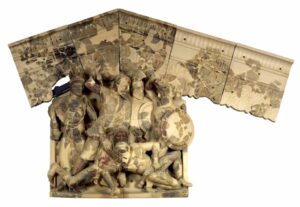
The National Etruscan Museum of Villa Giulia.
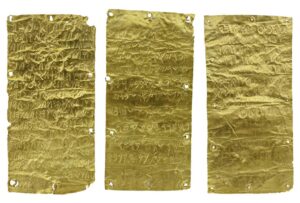
The National Etruscan Museum of Villa Giulia
The Sarcophagus of the Spouses: One of the museum’s most iconic pieces, the Sarcophagus of the Spouses, is a remarkable terracotta sculpture dating back to the 6th century BCE. It depicts a married couple reclining on a banqueting couch, a testament to the importance of the bond between husband and wife in Etruscan society.
The museum’s art collection features a wide range of Etruscan masterpieces, from intricately crafted jewelry and metalwork to exquisite frescoes and sculptures. Visitors can admire the creativity and skill of Etruscan artisans as they explore the various displays.
The Pyrgi Tablets: The Pyrgi Tablets, discovered in 1964, are a set of three gold tablets inscribed with Etruscan and Phoenician texts. They provide valuable information about the Etruscan language and their connection with other ancient civilizations. These tablets are a must-see for anyone interested in the linguistic history of the Etruscan people.
Daily Life and Society: The National Etruscan Museum of Villa Giulia offers a glimpse into the daily life of the Etruscans through its extensive collection of pottery, tools, and household items. These artifacts shed light on various aspects of Etruscan society, from agriculture and commerce to religious practices and leisure activities.
The Etruscan Banquet: Etruscan banquets were an essential part of their social life, with feasts serving as a way to solidify alliances and celebrate important events. The museum features several artifacts related to Etruscan dining, including intricately decorated pottery and bronze utensils, which reveal the sophistication of their culinary culture.
Frequently Asked Questions (FAQs) about the National Etruscan Museum of Villa Giulia
Q1: Where is the National Etruscan Museum of Villa Giulia located?
A1: The museum is located in Rome, Italy, within the historic Villa Giulia, close to the Villa Borghese gardens.
Q2: What are the opening hours of the museum?
A2: The National Etruscan Museum of Villa Giulia is open from Tuesday to Sunday, from 9 am to 8 pm. The museum is closed on Mondays.
Q3: Are guided tours available at the National Etruscan Museum of Villa Giulia?
A3: Yes, guided tours are available for individuals and groups. It is recommended to book a guided tour in advance to ensure availability.
Q4: Can I take photographs inside the museum?
A4: Photography is generally allowed inside the museum for personal, non-commercial use. However, flash photography and the use of tripods or selfie sticks are prohibited.
The National Etruscan Museum of Villa Giulia is a treasure trove for history enthusiasts and art lovers alike. It offers a unique opportunity to delve into the captivating world of the Etruscan civilization, providing a comprehensive and engaging overview of their culture, art, and daily life. With its stunning location in the heart of Rome, a visit to the National Etruscan Museum of Villa Giulia is an unforgettable experience that should not be missed.

